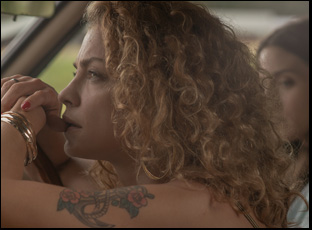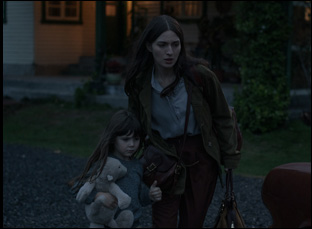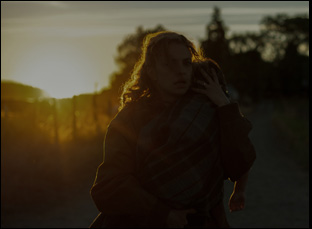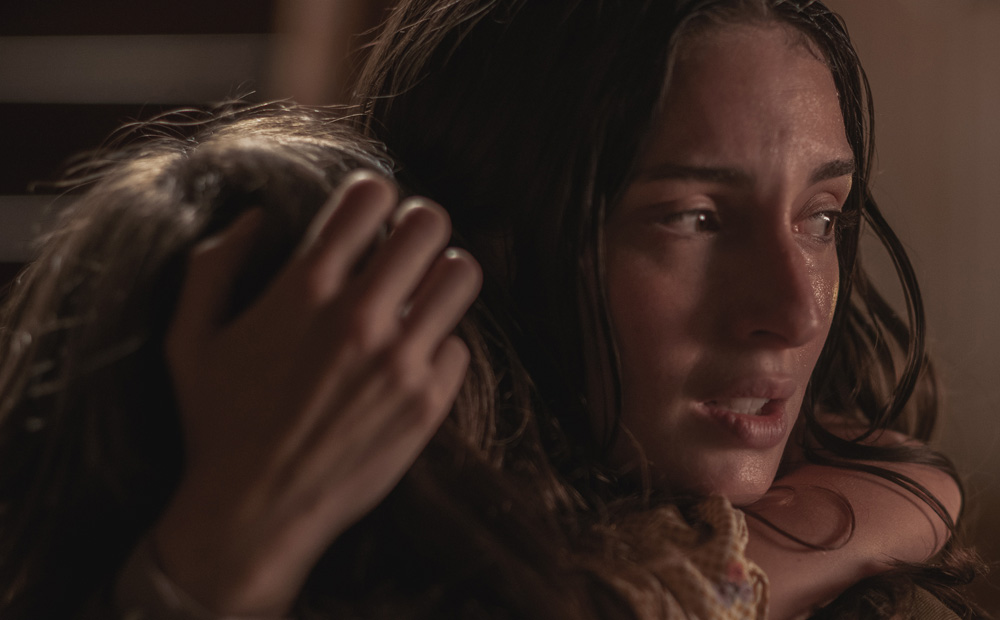“Someone is dragging me,” Amanda (María Valverde) can be heard saying at the start of “Fever Dream,” her voice barely above a whisper off-screen. You don’t need much of an imagination to picture what she does as Amanda is shown to be strewn across a forest floor by some unknown entity, but when what’s truly pulling her apart is amorphous, it was incumbent upon writer/director Claudia Llosa to somehow express how her lead has become divorced from the physical realm while actively remaining a part of it, experiencing her life at a distance as she tends to her daughter Nina. It was the rather brilliant invention of Samanta Schweblin’s prize-winning novel of the same name that Amanda would be in conversation with a young boy named David (Emilio Vodanovich), the son of her neighbor Carola (Dolores Fonzi), also caught between two worlds after locals, including his mother, start to think he’s been possessed, behaving strangely after an encounter with some horses that have taken ill.
While “Fever Dream” enchanted readers with Amanda and David’s bedbound repartee with their minds allowed to wander, but their bodies very much confined to a single room, Llosa, who has shown a gift at depicting the the tactility of beliefs and ideas in her characters’ lives since her 2009 international breakout “The Milk of Sorrow” in which the legacy of trauma passed down from one generation to the next in her native Peru took the form of breast milk, proved ideally suited to taking Amanda outside where as familiar as the world may be to everyone else, it suddenly feels foreign to her. While Carola will come over to talk about her fantasies of leaving, discontent with both a largely unresponsive son and a country life she no longer sees the beauty in anymore, Amanda is just trying to find stable ground, constantly feeling it shift beneath her feet and wondering where it’s all gone, even without David probing her for answers throughout, and as Llosa keeps the dialogue that made the book so distinctive as a haunting voiceover, it is special to see how she figures out enabling audiences to have something to hold onto in adapting “Fever Dream” for the screen as Amanda herself attempts to regain her physical bearings.
Following its recent premiere at the San Sebastian Film Festival, “Fever Dream” is rolling out far and wide on Netflix and recently Llosa and Schweblin spoke about their collaboration and the eerie sensation of realizing something that’s been in their head for years.

Claudia Llosa: For me, it was something that came to me unexpectedly. When I read the novel, which a close friend gave me, she just said, “You’ve got to read it. I’m not going to tell you why, but please read it,” so I read it at once in a session and I couldn’t put it down. The novel includes something very special because it puts a name to a feeling that every parent has felt — and every child has felt — which is how can I, on the one hand, give freedom to my child, and at the same time protect them? How do I find the right balance? What if I get there late? What if I’m distracted? What if I turn my head around and then it’s too late? When do I lose the possibility to take care of my children and save them from a tragic event and at the same time as a mother, how can I continue to find out who I am as an individual, as a professional and deal with the world and at the same time be there for my child? All these feelings are highly identifiable for all of us.
The story really manages to do that at the same time, and there’s a challenge there in reporting of a difficult situation that to me was a very important element. Those to me were the keys that led me to decide to reach out to Samanta as soon as I finished and convince her to work with me. It was a fantastic process. I don’t know when she decided to work with me, but she did, and she decided to be such a good part of it. It was the best decision I could ever take in my life both personally and professionally because it was so much fun at all levels.
Samanta Schweblin: Yes, I liked the idea of Claudia working on this, but the idea of writing this together was something I wasn’t quite sure about. I didn’t know as an author if I had the right distance from the material in order to be able to write an adaptation. Of course when you adapt something, you have to give up some of the material and how can an author give up some of the material? How do you make it all work within your head? But the way we worked on this was fantastic. We worked for an entire year on this from different cities via Skype every day – I worked from Berlin, she was in Barcelona, and I learned so much. There was a time where there were four hands working at the same time, but we didn’t know who was saying what and who was contributing what to the final project. It was very organic the way we worked.

Claudia Llosa: There were two very important things I wanted to keep that were in the novel – of course, we needed to try out what the material would become, but I really wanted to keep the off-screen voice. I really wanted to make sure that would be separate from what the audience would see in terms of images, so they would need to be two storylines that would overlap with this dialogue. It’s actually that way in the novel, but we made a change to bring it to the outside, into the woods and immerse it in nature, so the main idea was to generate a visual movement on the one hand so that there is a little bit of a transit at a physical level between what David does in the beginning and then there is a dangerous sensation that drags Amanda out [of out of the house].
But there are new layers of this story that are revealed little by little and this then obliges the viewer to be physically positioned in a space. This was one of the main proposals that I brought forward to Samanta that I wanted to keep during the writing process and that gave new life to the material, keeping its essence of the novel. There was an evocative approach that would allow for the plot and the tension to be supported and at the same time, it would allow people to discover new things.

Samanta Schweblin: Yes, there were many opportunities, and it was a very strong emotion I felt when I got to the set and I saw Amanda’s house. It was very intense seeing that materialized in front of my very eyes, and I was surprised by how many people were on set, all these professionals who were all focused on a different component of the final product. There were words from the script and we were the authors and all those people were bringing that to life, so it’s something written and then it is in the flesh and blood. Cinema is not literature. The material is different, but still, there’s a fidelity at an emotional level between the film and the book that was very intense when I felt what was happening, I could see that it was very well done and it was fun and people would really enjoy it.




